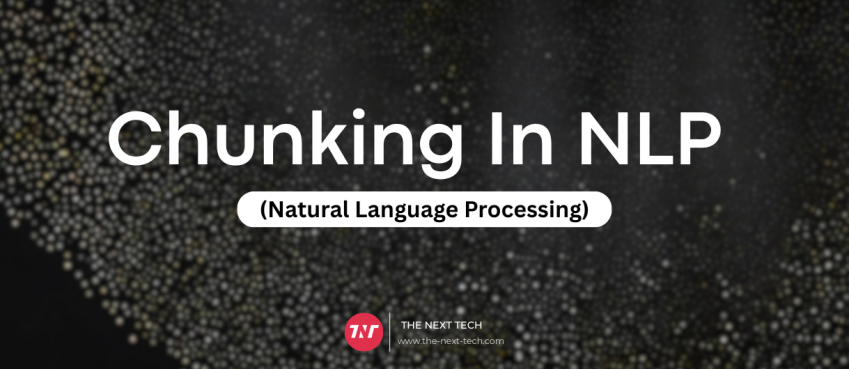
The current state of Machine Learning in Banking
The technology is changing the world as we know it, and few industries can benefit by using Artificial Intelligence and Machine Learning as Banking.
The definition of AI implies computers taking over human tasks like communication or making decisions, while ML is basically doing the same without the need for explicit instruction. This is a perfect solution for bankers to improve their businesses.
Sure, banking is known as an industry heavily relying on legacy, but change is inevitable. Old methods simply can’t provide the necessary level of security and efficiency.
Automating processes with AI in Banking can optimize operations and provide significant cost savings, here is the main reasons business leaders are looking to implement the technology:

In fact, according to NBRII, almost a third of financial services executives are utilizing banking AI in some form, the most popular being recommendation engines, voice recognition, and predictive analytics.
Yes, there are some traditional bankers, who prefer to stick to the old models, but the industry is demanding change. To stay relevant and attractive for the clients, banks must adopt the latest technologies to improve operations and boost the customers’ satisfaction.
Jim Marous, financial industry influencer, co-publisher of The Financial Brand and the owner and publisher of the Digital Banking Report
How can AI help banks? Top 6 benefits of AI in Banking
Speaking of benefits and opportunities for banking, Machine Learning, and Artificial Intelligence quite few of them. We will look at the most interesting at the moment.
Fraud detection
This is probably the greatest concern of any financial institution, as usually, fraud detection takes enormous time and effort. AI/ML can make transactions more secure, at the same time reducing expenses on the fraud detection procedure.
Let’s talk about detecting credit card fraud for example – ML algorithms can be trained to find suspicious activities judging by the shop or town client is in, how his purchase activity deviates from the usual patterns, or whether it is something strange in his actions.
It could be achieved with the level of precision unattainable for actual people for the job, analyzing thousands of operations happening in the moment of time. Here is a white paper on how banks can solve fraud issues if you want to learn more!
Custom service offerings
When the security level is high, and the client feels safe to trust your bank, the next step is personalization. AI and ML in banking are providing that opportunity for business owners. You can set your solution to analyze personal client data and provide custom approaches and personalized offers for a client.
Things like friendly notifications for payments or planning tools can build the loyalty of clients and improve the brand image.
Loan management and risk reduction
Making a decision to automate credit risk assessment you will get better results. In a process of assessments, people make errors, which are unlikely to make for banking AI. Using Predictive Analysts it’s even possible for algorithms to make forecasts based on the credit history of the client and avoid risks that might occur.
This process can take minutes for algorithms, so it’s not only more secure but faster. In the loan management area, banking machine learning eliminates tons of unnecessary paperwork and provides much quicker verification and identification.
Process automation
Another key benefit of Machine Learning in Banking is automation. RPA can take over routine activities, freeing experts to use their time and effort for more sophisticated goals. Chatbots are an easy illustration of this – use your experts only when necessary, AI-powered chatbots can easily handle basic conversations and queries.
Also read: [10 New] Best OnionPlay Alternatives To Stream TV Shows And Movies
Revenue boost and cost savings
Among the most effective ways to increase revenue, thanks to ML-powered solutions, are designing new products, process optimization, and improved targeting for new clients. Artificial Intelligence can also save a massive amount of money for bankers by improving various elements of a current business model. Here are some estimates of opportunities by Business Insider Intelligence:

The most interesting Machine Learning in Banking use cases
The top financial organization has already implemented innovative technological advancements into their day-to-day processes, from chatbots to machine learning for investment banking. This is are the most prominent real-world examples from the United States:
U.S. Bank
The U.S. Bank’s CIO Dominic Venturo sees chatbots as a tool to help human employees to be more productive, not a threat to their employment status. This bank partnered with AI Innovation Group to launch a constantly trained Machine Learning algorithm for helping bank associates to answer rarely asked queries more quickly and precisely.
Bank of America
A mobile banking pioneer doesn’t intend to stop on the path of innovation. They launched Erica, the virtual assistant that uses Predictive Analytics and Cognitive Messaging. It operates as a financial advisor for nearly 50 million clients of the Bank of America. As a part of a mobile banking solution, this AI assistant is freeing customer support centers and handles routine transactions.
Citibank
They have their own startup program, investing in various cybersecurity and banking startups across the world. The most notable investment of Citibank is FeedzAI, a startup that leverages Data Science to fight fraudulent financial activities.
Machine Learning algorithms are the core of FeedzAI, and are used to process huge volumes of information in real-time, to alert security experts when fraud happens.
Also read: 7 Best Sites Like Artists And Clients To Inspire
JPMorgan Chase
This is a great example of automation, as JP Morgan Chase had introduced Contract Intelligence (COiN) with the goal to reduce the time for analysis of business correspondence and automate daily routine.
COiN is a Machine Learning algorithm trained to analyze documents and extract the most valuable data out of them. The tool beat the wildest expectations settling over 10 000 credit agreements in a few seconds, instead of nearly 400 000 hours of human labor.
Wells Fargo
They implemented an AI-powered chatbot in a Facebook Messenger to improve customer experience. Wells Fargo’s virtual assistant can easily provide such functions as resetting the client’s password or give more account details.
Previously, getting those services took a few pages of forms to fill for the client, but now it could be done in a couple of minutes without any additional hassle.

How to implement AI in Banking and Finance industries
Every case is unique and the approaches are constantly evolving. But if you had decided to implement an AI solution, from a simple chatbot to a service based on machine learning for investment banking, you should follow the next steps to get the job done.
This is a list of high-level stages for the AI implementation process.
| High-level stages | AI implementation process |
|---|---|
| Strategy | Even the smallest solution must align with the global vision of the company, so every AI initiative requires a corporate level AI strategy. |
| Planning | A bank must get a clear understanding of the extent it plans to use an AI solution. Creating a comprehensive user story might help here. |
| Development | Even before picking the model, it is important to prepare an appropriate selection of data, divided by training and testing data. This aspect is crucial to the performance of an algorithm |
| Deployment | Machine Learning models require additional adjustments after deployment, so take it into consideration and make sure that this factor won’t disrupt any existing processes |
| Monitoring and supporting | ML models require periodic reviews and ongoing monitoring to prevent any security threats and guarantee maximum performance. |
Conclusion
Artificial Intelligence and Machine Learning in Banking is an interesting topic to discuss. However, it is far more exciting to be an innovator and set the bar in the industry by developing your own AI solution.
All you need is an idea, passion, and trusted partner with experience in Machine Learning development like SPD Group, to make your mark in banking history!
Top 10 News
-
01
Top 10 Deep Learning Multimodal Models & Their Uses
Tuesday August 12, 2025
-
02
10 Google AI Mode Facts That Every SEOs Should Know (And Wha...
Friday July 4, 2025
-
03
Top 10 visionOS 26 Features & Announcement (With Video)
Thursday June 12, 2025
-
04
Top 10 Veo 3 AI Video Generators in 2025 (Compared & Te...
Tuesday June 10, 2025
-
05
Top 10 AI GPUs That Can Increase Work Productivity By 30% (W...
Wednesday May 28, 2025
-
06
[10 BEST] AI Influencer Generator Apps Trending Right Now
Monday March 17, 2025
-
07
The 10 Best Companies Providing Electric Fencing For Busines...
Tuesday March 11, 2025
-
08
Top 10 Social Security Fairness Act Benefits In 2025
Wednesday March 5, 2025
-
09
Top 10 AI Infrastructure Companies In The World
Tuesday February 11, 2025
-
10
What Are Top 10 Blood Thinners To Minimize Heart Disease?
Wednesday January 22, 2025







